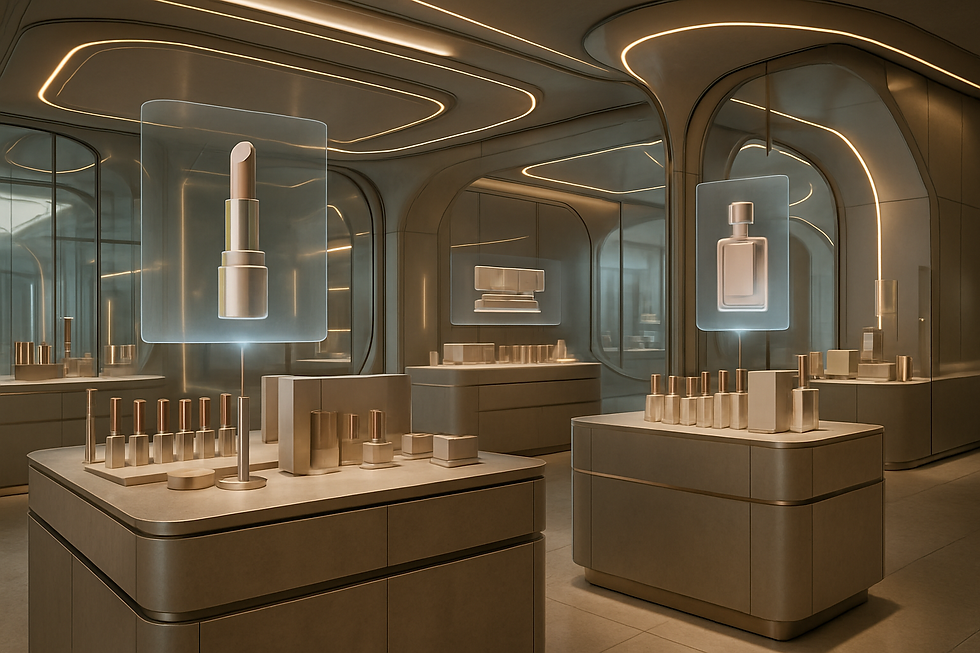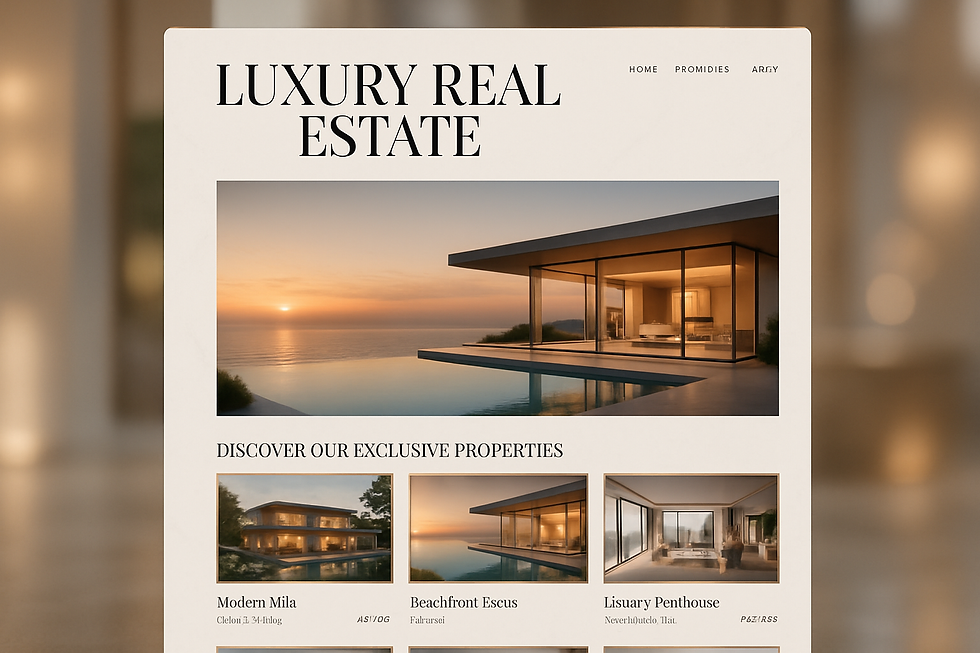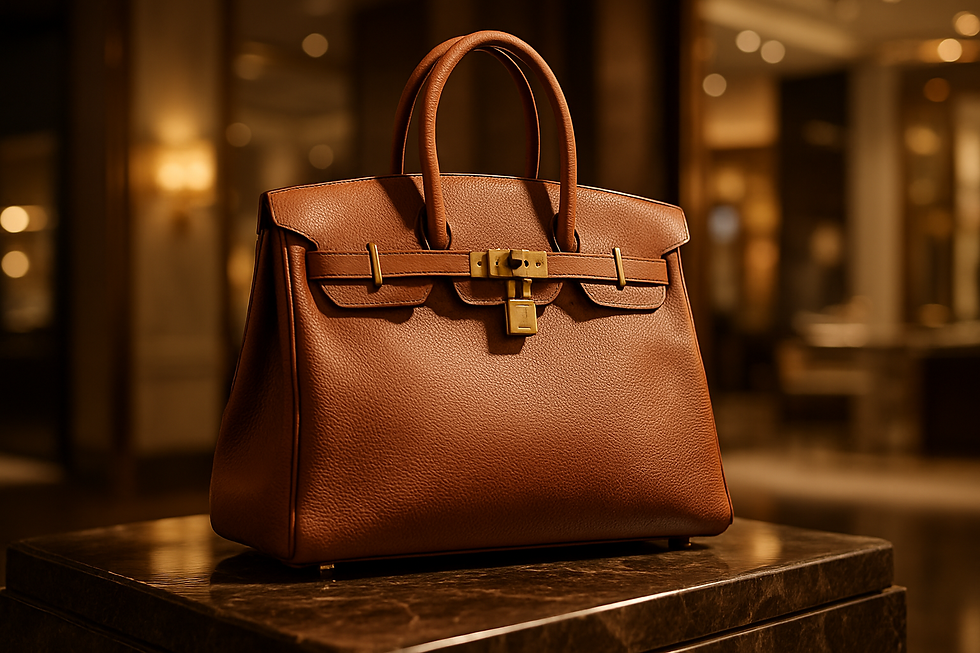Why Beauty Sells: The Neuroscience Behind Irresistible Marketing
- Kahla Marketing
- Aug 8
- 4 min read

Imagine walking into a store and, without realizing it, feeling drawn to a product's packaging before even reading what it contains. Or clicking on a website just because “it looks nice.” That wasn’t a coincidence. It was your brain responding to aesthetics. And in marketing, that reaction has a name: Neuroaesthetic Marketing.
Welcome to the art of using the science of beauty to captivate the consumer’s mind.
What is Neuroaesthetic Marketing?
Neuroaesthetic Marketing is an emerging discipline that combines neuroscience, aesthetics, and business strategy to design visual stimuli that activate the brain’s reward system.
In simple terms, it’s about making your products, packaging, ads, or websites so visually appealing that the consumer’s brain desires them before even knowing what they are.
It’s based on the idea that our brains are wired to respond positively to certain patterns, colors, shapes, and proportions that we perceive as “beautiful.” This response isn’t just emotional—it’s neurological.
Why Does Beauty Sell?
Beauty activates the dopaminergic system—the same one triggered by pleasure, food, sex, or music. When we see something beautiful, our brain releases dopamine: the hormone linked to pleasure and motivation.
And when something gives us pleasure… we want more of it.
This translates into:
Increased visual attention
Better brand recall
Greater willingness to pay more
Positive product association
In other words: aesthetically pleasing design doesn’t just look good—it influences buying behavior.
The Science Behind Aesthetics
1. Symmetry and the Golden Ratio
Studies show that symmetry is perceived as a sign of health and order. Balanced proportions activate brain regions linked to pleasure and reward.
🧠 The golden ratio (1.618), found in nature, art, and the human body, is also present in logos like Pepsi or Apple. Coincidence? Highly unlikely.
2. Emotional Colorimetry
Colors don’t just decorate—they communicate. Red grabs attention and urgency. Blue conveys trust. Pink soothes. Black suggests luxury.
Each hue leaves an emotional imprint. And when applied with intention, color becomes a psychological anchor.
3. Curves vs. Angles
Our brains prefer soft curves. Rounded shapes are associated with safety and warmth, while sharp angles trigger alertness or discomfort.
That’s why many wellness or female-oriented brands use rounded designs, while tech brands tend to favor geometric, minimalist forms.
4. Visual Minimalism
In an overstimulated world, clean design is gold. The brain gets tired of visual clutter but responds positively to white space, clear hierarchy, and harmonious organization.
Neuroaesthetic marketing isn’t about doing more—it’s about designing with intention.
Where Is It Applied?
🌐 Web Design
A user forms a first impression of a website in less than 50 milliseconds. And most of the time, it’s the visual appeal that determines whether they stay or bounce.
Key elements:
Modern, readable typography
Emotionally aligned color palettes
Large, clean images with a distinct visual identity
Smart use of white space
It’s not just “nice design.” It’s design that keeps users in a state of pleasurable focus.

🎁 Packaging Design
Did you know packaging can be more influential than the product itself?
Brands like Apple have mastered the aesthetic experience starting from unboxing. Colors, textures, magnetic closures—every detail is designed to seduce the brain.
A well-designed package:
Sparks curiosity
Creates a sensory experience
Communicates quality before being opened
Becomes “Instagrammable”
👗 Fashion and Product Design
The fashion industry is inherently neuroaesthetic. From haute couture to fast fashion, everything is visually engineered to trigger desire.
Lines, cuts, textures, contrasts—every element points to a single goal: visual seduction.
The most successful brands understand their products must not only function well—they must be visually irresistible.

🎨 Art and Branding
Art in branding is not just decoration—it’s strategy. Brands that use illustrations, visual compositions, or artistic concepts foster deeper emotional connection.
Neuroaesthetic branding pays attention to:
Consistent iconography
Photography with a defined style
Harmony across logo, website, and social platforms
Visual motion (in reels, animations, banners)
Real-World Examples of Neuroaesthetic Marketing
Glossier With its signature soft pink, friendly typography, and luxurious-looking packaging at an accessible price, Glossier built a brand that invites touch—and purchase.
Airbnb The brand shifted from a cluttered interface to one that feels emotionally clean and visually calm. Large images, soft typography, white space—design that feels like “home.”
Chanel White, black, and gold. Clean lines. Aesthetic-focused campaigns. Chanel activates the brain’s reward center for luxury, elegance, and mystery.
How to Apply Neuroaesthetic Marketing in Your Business
✅ Conduct an Aesthetic Audit Does your current branding spark visual pleasure, or does it just “get the job done”? Review your logo, typography, social media, website, and packaging. Are they consistent, attractive, and memorable?
✅ Define Your Target Emotion What do you want your customer to feel when they see your brand? Security? Desire? Joy? Luxury? Each emotion requires a specific visual strategy.
✅ Work with Neuroaesthetic-Savvy Designers It’s not about “making it pretty”—it’s about designing with emotional purpose. Demand intentionality in every color, stroke, and shape.
✅ Implement A/B Testing Test design variations to see which ones generate more clicks, engagement, or conversions. Your audience always has the final say (and so does their brain).
✅ Educate Your Team From copywriters to designers, everyone should understand the power of visual cues. Aesthetics are not a luxury—they’re a strategy.
Can Beauty Be Strategic? Absolutely. Especially today.
In an environment overloaded with information, beauty becomes a competitive advantage. Not because it “looks nice,” but because it feels right. And everything that feels right is something the brain wants to repeat.
Neuroaesthetic Marketing isn’t about manipulation. It’s about understanding how the human brain works and creating experiences that connect with what truly moves us: visual emotion.
🧠 Is your brand already speaking to your customer’s brain?
At Kahla Marketing, we help you craft visual experiences that enchant from the very first glance—because it’s not about being seen. It’s about being remembered.
Contact us and activate the visual pleasure of your brand.




Comments